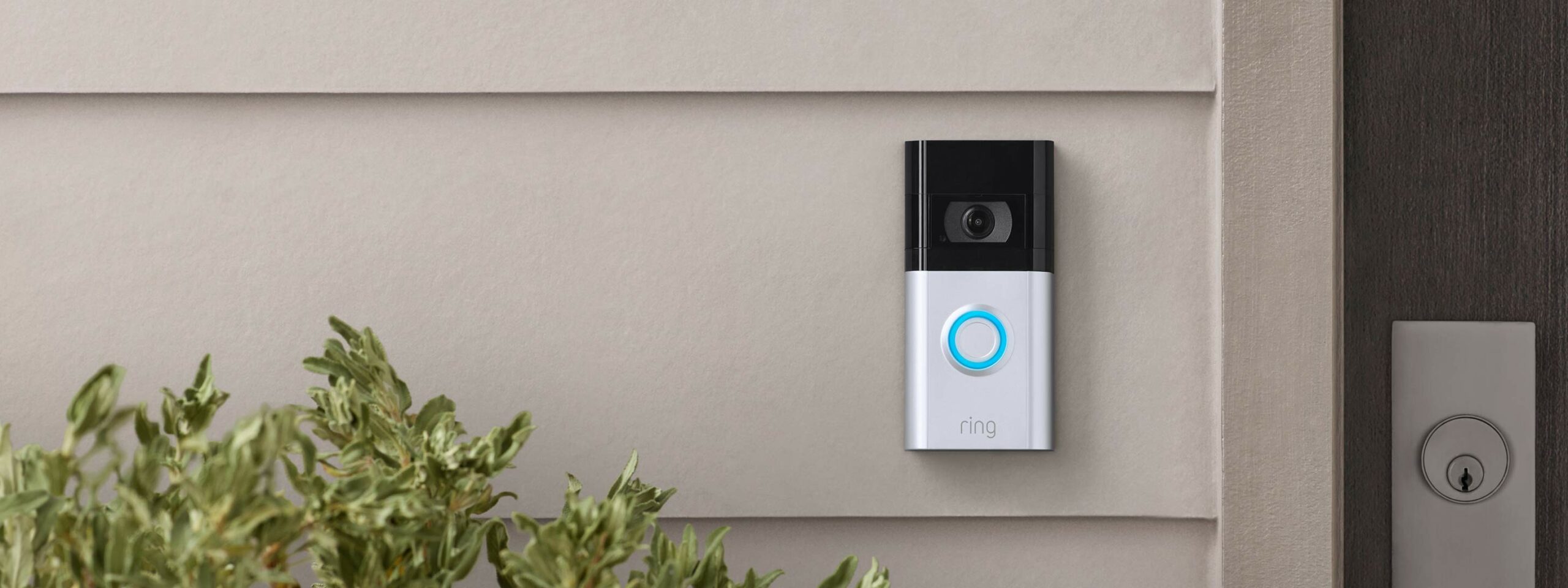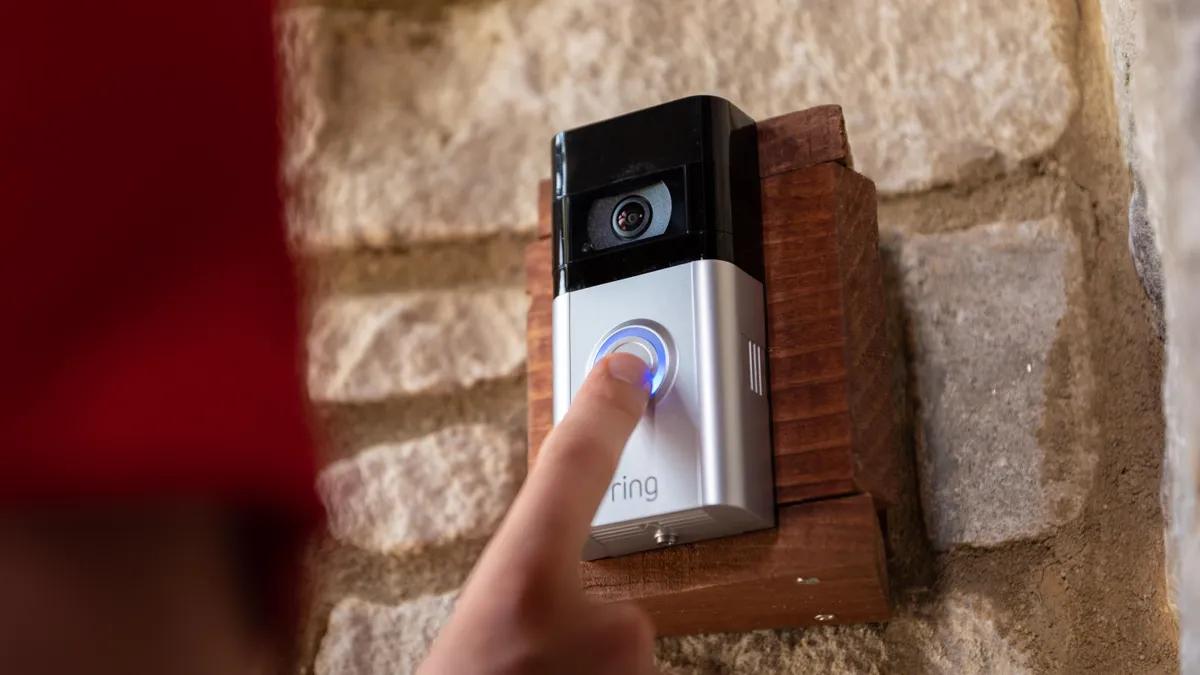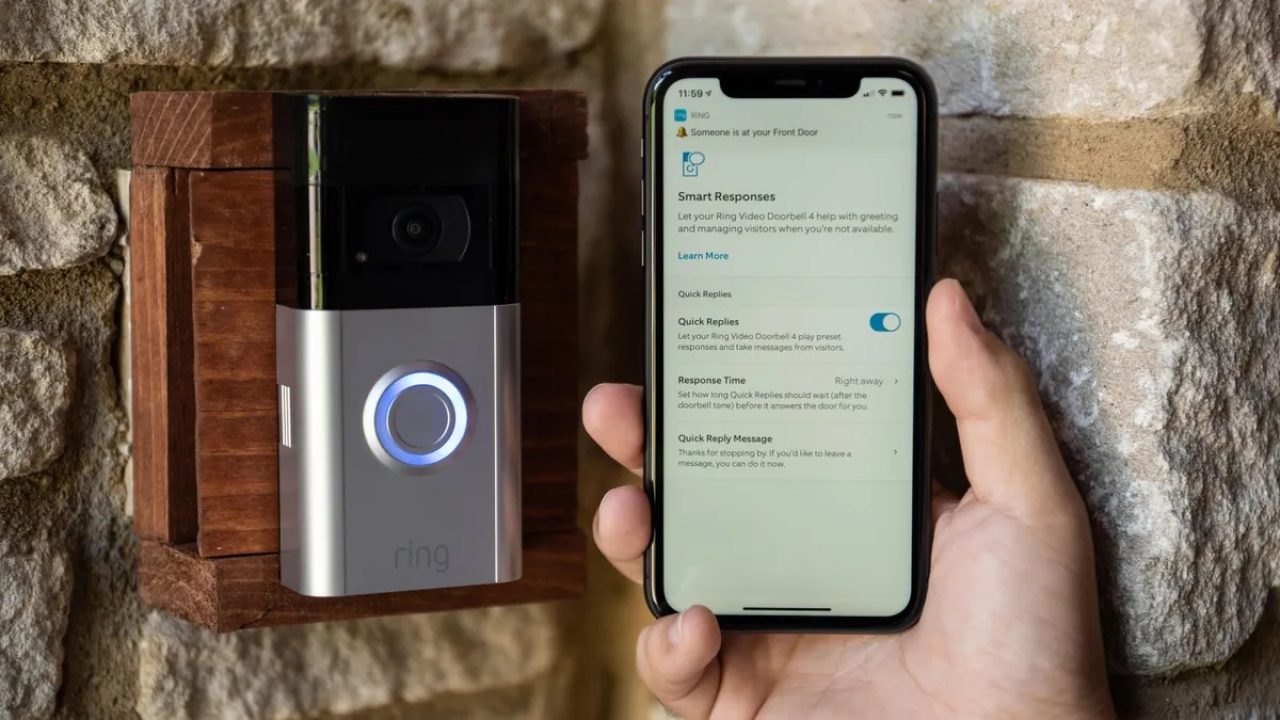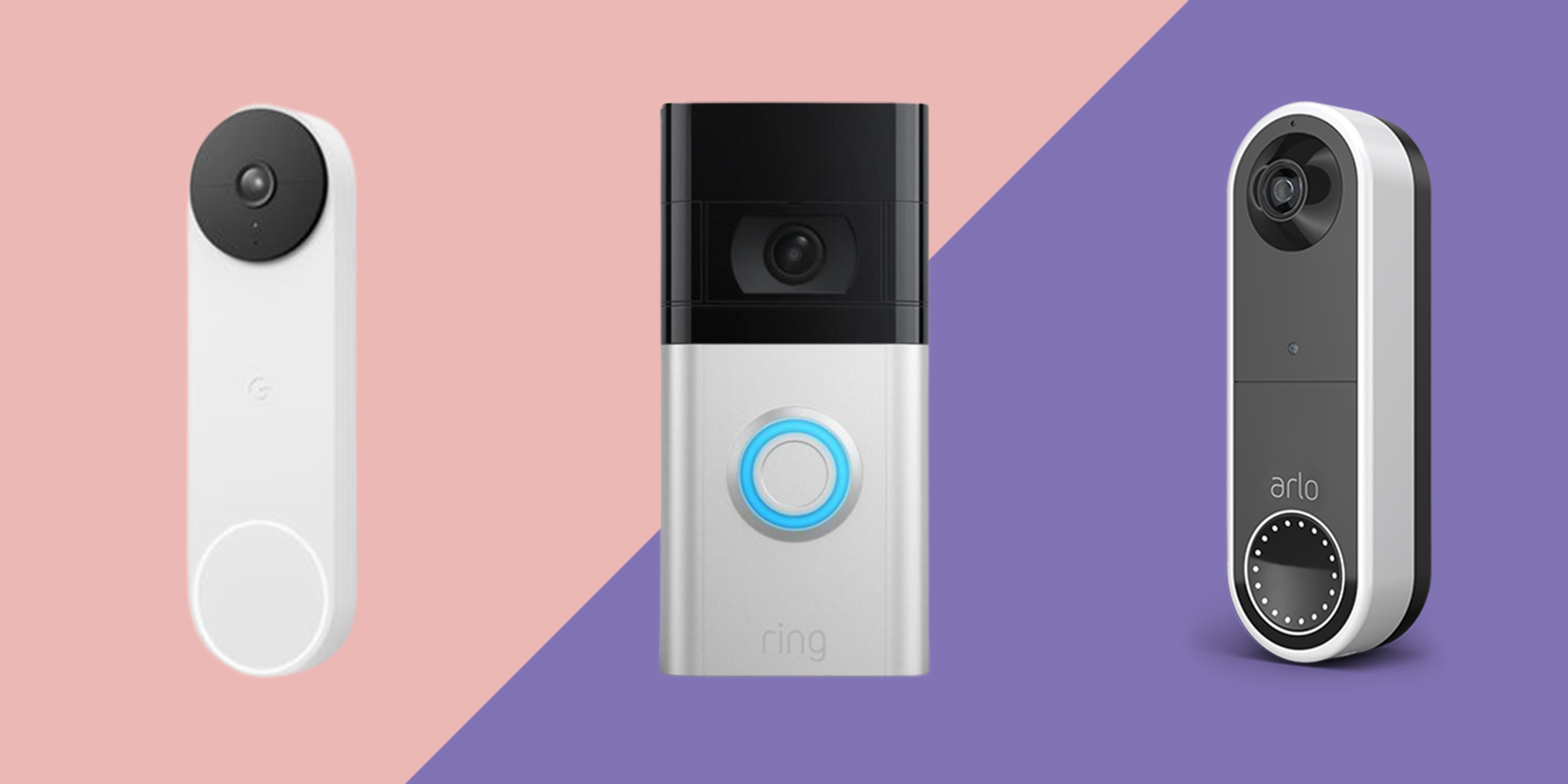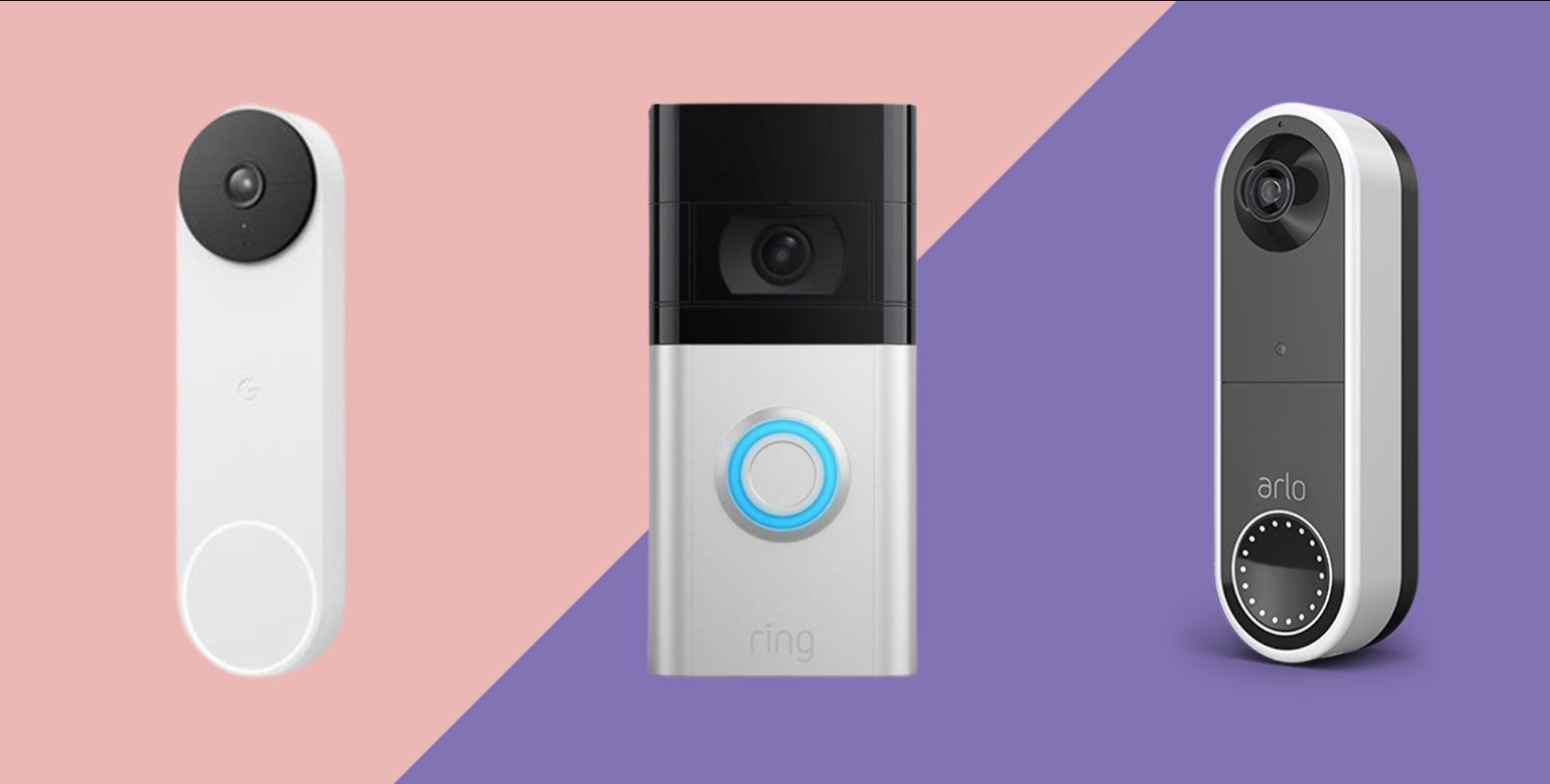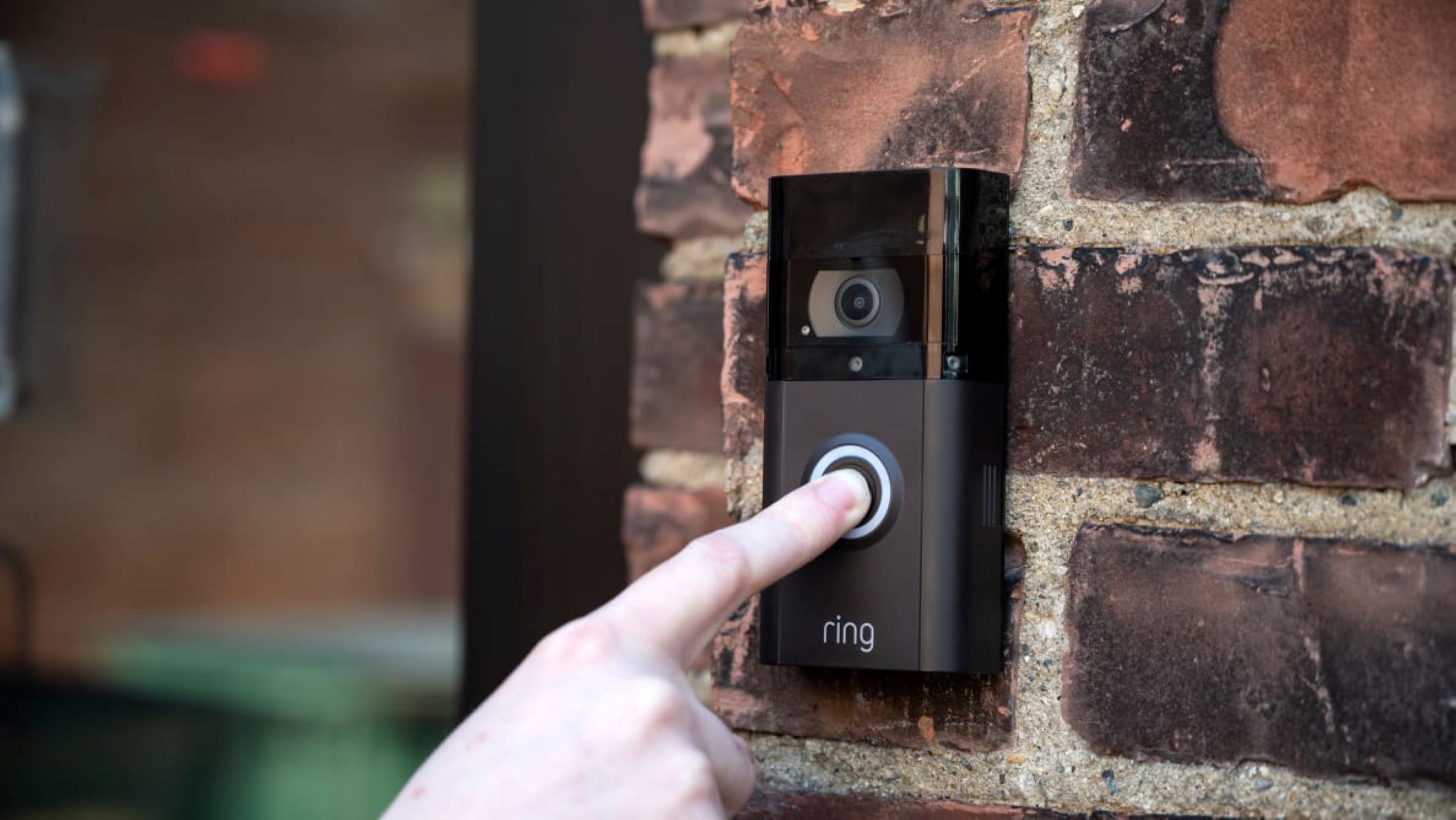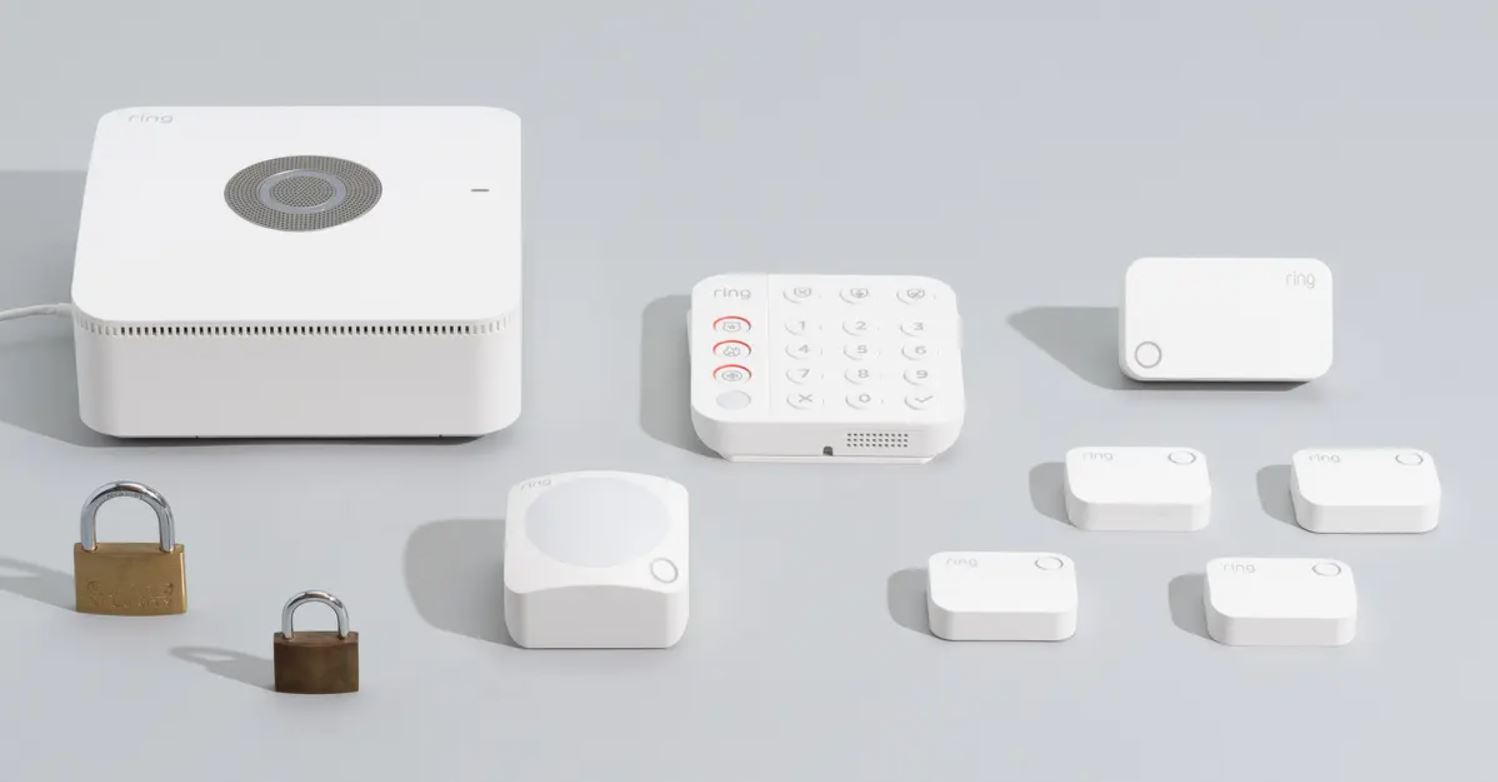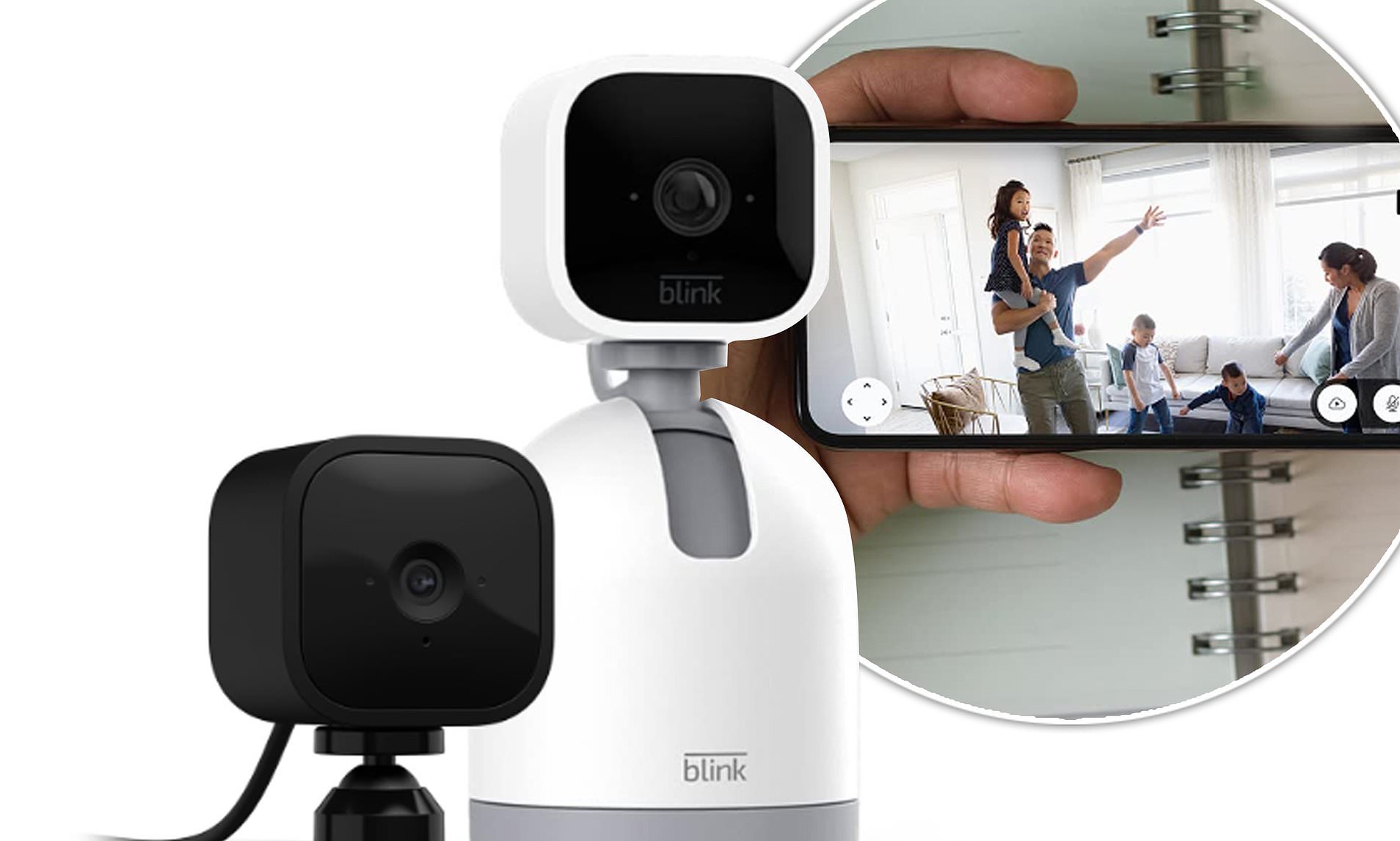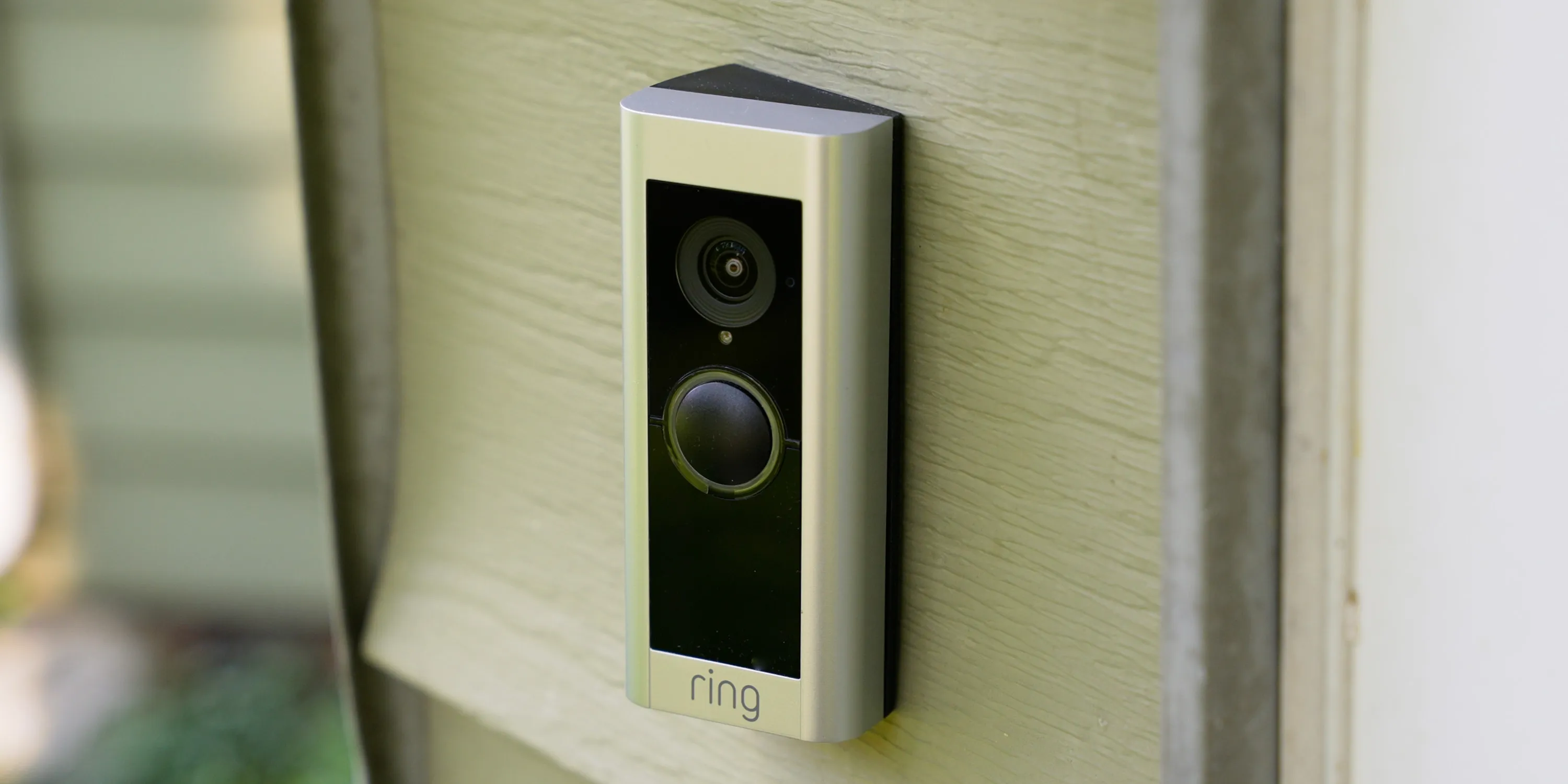Introduction
Welcome to this article where we delve into the puzzling phenomenon of the delay in viewing Ring video doorbell videos on your Samsung S4 smartphone. You’ve probably noticed that there is a frustrating 4 to 9 minute delay between the time someone rings your doorbell and when you receive the video feed on your device. We understand how inconvenient and confusing this can be, and we’re here to shed some light on the reasons behind this delay.
The Ring video doorbell is an innovative device that allows you to monitor and interact with visitors at your front door remotely using your smartphone. However, the delay in receiving the video feed can leave you feeling out of sync with what’s happening outside your door. It’s important to understand that this delay is not specific to the Ring video doorbell or the Samsung S4 – it can occur with any video doorbell and smartphone combination.
To tackle this issue effectively, we need to explore the various factors that contribute to this delay. It’s essential to identify these factors in order to find potential solutions and improve the performance of your Ring video doorbell.
In the following sections, we will examine the possible causes for the delay. We will discuss network connectivity issues, device compatibility, bandwidth limitations, and the impact of video settings. Additionally, we will provide troubleshooting tips to help you minimize the delay and improve your overall experience with the Ring video doorbell on your Samsung S4.
So, let’s dive into the intricacies of this delay and uncover the reasons behind it. By understanding the factors at play, we can work towards finding solutions that will ensure you receive timely video feeds from your Ring video doorbell right on your Samsung S4 smartphone.
Understanding the Delay
Before we delve into the potential causes of the delay in viewing Ring video doorbell videos on your Samsung S4, it’s important to have a clear understanding of how the video transmission process works.
When someone presses the doorbell button on your Ring device, a video recording of the activity is initiated. This recording is then sent to the Ring cloud servers for processing. Once processed, the video is made available for you to view on your smartphone through the Ring app.
However, there are several steps involved in this process that can contribute to the delay you experience. First, the video signal from the Ring device needs to be transmitted over your home internet connection to the Ring cloud servers. This transmission can be affected by factors such as network congestion, the quality of your internet service provider, or any issues with your Wi-Fi network.
Once the video reaches the Ring servers, it undergoes processing to optimize its quality and make it ready for streaming. This processing time can vary depending on the server load and the complexity of the video file. After the processing is complete, the video is then made available for you to view on your Samsung S4 via the Ring app.
It’s important to note that the delay is not always a fixed duration. Factors like the network conditions, server load, and the video’s processing requirements can cause the delay to fluctuate between 4 to 9 minutes.
Now that we have a better understanding of how the video transmission process works, let’s explore the factors that can contribute to the delay in viewing Ring video doorbell videos on your Samsung S4. By identifying these factors, we can take steps to mitigate the delay and ensure a smoother viewing experience.
Factors Affecting Delay
Several factors can contribute to the delay you experience when viewing Ring video doorbell videos on your Samsung S4. Understanding these factors will help you identify potential issues and find solutions to minimize the delay:
- Network Connectivity Issues: A stable and reliable internet connection is essential for a smooth video streaming experience. If your internet connection is slow or unreliable, the video data may take longer to reach your Samsung S4, resulting in a delay. Additionally, network congestion during peak usage times can also contribute to delays in video transmission.
- Device Compatibility: While the Ring video doorbell is designed to work with a wide range of smartphones, including the Samsung S4, compatibility issues can still arise. Outdated software, incompatible firmware versions, or limited device resources can all impact the speed at which the video feed is received on your Samsung S4.
- Bandwidth Limitations: The video data from your Ring device needs to compete with other internet traffic on your network. If you have multiple devices connected to your Wi-Fi network or if you are streaming high-definition content on other devices simultaneously, it can put a strain on your available bandwidth. This congestion can lead to delays in receiving the video feed on your Samsung S4.
- Adjusting Video Settings: The Ring app allows you to adjust the video quality settings to optimize the viewing experience. However, setting the video quality to the highest resolution may increase the file size and require more time for processing and transmission. Experimenting with different video settings can help find a balance between video quality and minimizing delay.
By considering these factors, you can begin troubleshooting the possible causes of the delay. It’s important to remember that the delay can be influenced by a combination of these factors, and finding the right solution may require some experimentation and adjustments.
In the next sections, we will explore specific techniques to troubleshoot and address these factors, helping you minimize the delay and enjoy a smoother experience when viewing Ring video doorbell videos on your Samsung S4.
Network Connectivity Issues
Network connectivity plays a crucial role in the delay you experience when viewing Ring video doorbell videos on your Samsung S4. Poor internet connection or network congestion can significantly impact the speed at which the video data is transmitted to your device. Here are some factors to consider and potential solutions to address network connectivity issues:
- Internet Speed: Check the speed of your internet connection. You can use online speed test tools or contact your internet service provider to ensure you have a reliable and sufficient internet speed for video streaming. If your internet speed is below the recommended requirements, you may experience delays in receiving the video feed on your Samsung S4.
- Wi-Fi Strength: The distance between your router and your Samsung S4 can affect the strength of your Wi-Fi signal. If your device is too far from the router or there are physical barriers such as walls or furniture obstructing the signal, it can result in a weak connection and slower data transfer. Try moving your router closer to your device or consider using Wi-Fi range extenders to improve the Wi-Fi signal strength.
- Router Settings: Check the settings on your router to ensure it is optimized for video streaming. Some routers have Quality of Service (QoS) settings that prioritize video traffic. Enabling QoS for your Ring video doorbell can help ensure a smoother video streaming experience by allocating more bandwidth to it.
- Network Congestion: Network congestion, particularly during peak usage times, can affect the speed and reliability of your internet connection. Consider scheduling your Ring video doorbell’s activity during off-peak hours to minimize the impact of network congestion. Additionally, you can also try disconnecting other devices from your network if they are consuming a significant amount of bandwidth.
- Mobile Data: If you are experiencing issues with your Wi-Fi network, you can try using your mobile data connection instead. However, keep in mind that video streaming consumes a considerable amount of data, so ensure that you have an adequate data plan to avoid exceeding your monthly limit.
By addressing these network connectivity issues, you can improve the speed and reliability of the video transmission from your Ring video doorbell to your Samsung S4. Remember to test each solution individually and monitor the impact it has on reducing the delay.
Device Compatibility
Device compatibility is another factor that can contribute to the delay when viewing Ring video doorbell videos on your Samsung S4. While the Ring video doorbell is designed to be compatible with a wide range of smartphones, including the Samsung S4, there are certain considerations to keep in mind. Here are some factors to consider and potential solutions to address device compatibility issues:
- Software Updates: Ensure that both your Samsung S4 and the Ring app are running on the latest software versions. Software updates often include bug fixes, performance enhancements, and compatibility improvements. By keeping your devices up to date, you can ensure they are optimized to work together seamlessly.
- Firmware Updates: Similarly, check for firmware updates for your Ring video doorbell. The Ring team regularly releases firmware updates to improve functionality and address compatibility issues with different smartphone models. Updating the firmware on your Ring device can help resolve any specific compatibility issues with your Samsung S4.
- Device Resources: The Samsung S4 is an older smartphone model, and it may have limited processing power and memory compared to newer devices. This can impact the speed at which the video feed is received and processed. To optimize performance, close any unnecessary apps running in the background and clear cache and storage on your device.
- App Settings: Check the app settings within the Ring app on your Samsung S4. Ensure that you have enabled all necessary permissions for the app to function properly. Additionally, consider adjusting settings such as push notifications and video quality to find a balance between performance and delay reduction.
- Compatibility Mode: If you continue to experience compatibility issues, check if there is a compatibility mode available in the Ring app settings. This mode may help resolve specific issues that arise when using older smartphone models like the Samsung S4.
By addressing these device compatibility considerations, you can enhance the compatibility between your Ring video doorbell and the Samsung S4, potentially reducing the delay in receiving video feeds. Remember to follow the recommended steps based on your specific device and the Ring app version you are using.
Bandwidth Limitations
Bandwidth limitations can significantly impact the delay you experience when viewing Ring video doorbell videos on your Samsung S4. When multiple devices are connected to your Wi-Fi network or when there is high data usage, the available bandwidth is divided among them, causing slower data transfer and delays in video transmission. Here are some factors to consider and potential solutions to address bandwidth limitations:
- Reduce Network Traffic: Disconnect or limit the use of other devices connected to your Wi-Fi network, especially those consuming a considerable amount of bandwidth. This includes devices streaming high-definition videos, downloading large files, or engaging in online gaming. By reducing network traffic, you can free up more bandwidth for your Samsung S4 to receive the video feed from your Ring doorbell in a timely manner.
- Optimize Wi-Fi Settings: Ensure that your Wi-Fi router is properly configured to deliver optimum performance. Consider changing the channel on your Wi-Fi router to avoid interference from neighboring networks. Additionally, enabling features like WMM (Wi-Fi Multimedia) can prioritize video traffic, ensuring that the video data from your Ring doorbell gets the necessary bandwidth to minimize delays.
- Upgrade Your Internet Plan: If you frequently experience bandwidth limitations and delays, consider upgrading your internet plan to a higher speed or a plan that offers unlimited data. This will provide you with ample bandwidth to accommodate the streaming needs of your Ring video doorbell and other devices without compromising performance.
- Use Bandwidth Management Tools: Some routers and Wi-Fi systems have built-in bandwidth management tools that allow you to allocate bandwidth usage based on priority. Explore your router’s settings or consider investing in a Wi-Fi system that offers advanced bandwidth management features. This way, you can prioritize video traffic from your Ring video doorbell, ensuring smooth and timely video transmission.
- Consider Wired Connection: If your Wi-Fi network is prone to bandwidth limitations and delays, consider connecting your Samsung S4 directly to your router using an Ethernet cable. By using a wired connection, you can bypass any interference or congestion on the Wi-Fi network, providing a more stable and reliable connection for video streaming.
By addressing these bandwidth limitations, you can optimize your Wi-Fi network and ensure that your Samsung S4 receives the necessary bandwidth to receive video feeds from your Ring video doorbell without experiencing significant delays. Experiment with these solutions to find the one that works best in your specific network environment.
Adjusting Video Settings
Adjusting the video settings can have a significant impact on the delay you experience when viewing Ring video doorbell videos on your Samsung S4. By fine-tuning the video quality settings, you can optimize the video transmission process and minimize delays. Here are some factors to consider and potential solutions when adjusting video settings:
- Video Quality: The Ring app allows you to adjust the video quality settings to balance between video resolution and file size. Higher video quality settings may result in larger file sizes, which can take longer to process and transmit. Consider experimenting with different video quality settings to find the optimal balance between video clarity and reduced delay.
- Frame Rate: Frame rate refers to the number of individual frames or images displayed per second in the video. A higher frame rate can result in smoother video playback but may increase file size and processing requirements. Depending on your specific preferences, you can adjust the frame rate to optimize video quality while minimizing delays.
- Compression Settings: Compression settings determine the level of compression applied to the video files. Higher compression can reduce file size but at the cost of some video quality. Finding the right compression settings that maintain an acceptable level of video quality while reducing file size can help minimize the delay in receiving video feeds on your Samsung S4.
- Audio Settings: The Ring video doorbell also captures audio along with the video. While audio is essential, it can increase the file size and processing requirements. Consider adjusting the audio settings to strike a balance between audio quality and minimizing delays in video playback.
- Experiment and Monitor: Adjusting video settings is often a matter of trial and error. Experiment with different settings and closely monitor the impact they have on both video quality and delay. Keep in mind that finding the perfect settings may require some fine-tuning and adjustments to suit your individual preferences and network conditions.
By adjusting these video settings, you can optimize the video transmission process and reduce the delay in viewing Ring video doorbell videos on your Samsung S4. Take the time to find the right balance between video quality and minimizing delays, ensuring a smoother and more enjoyable viewing experience.
Troubleshooting the Delay
If you are still experiencing a noticeable delay in viewing Ring video doorbell videos on your Samsung S4, despite addressing the factors mentioned earlier, there are several troubleshooting steps you can take. By following these steps, you can further identify and resolve any underlying issues contributing to the delay:
- Restart Your Devices: Start by restarting both your Samsung S4 and your Ring video doorbell. This simple step can help clear any temporary glitches or software hiccups that may be causing the delay.
- Reposition Your Router: Check the placement of your Wi-Fi router. Ensure that it is positioned in an optimal location, away from physical barriers and obstructions. Repositioning your router can help improve its signal strength and reduce interference, ultimately leading to improved data transfer and reduced delay.
- Reinstall the Ring App: If you have tried all other troubleshooting steps and the delay persists, consider reinstalling the Ring app on your Samsung S4. This can help resolve any software-related issues that may be affecting the performance of the app.
- Contact Ring Support: If you have exhausted all troubleshooting steps and the delay still persists, it may be helpful to contact Ring’s customer support. Their technical team can provide further assistance and guidance specific to your device and setup, helping you identify any other potential issues contributing to the delay.
- Consider Upgrading Your Devices: If all else fails, it may be worth considering upgrading either your smartphone or your Ring video doorbell. Newer devices often come equipped with improved technology, better compatibility, and enhanced performance. Upgrading can potentially resolve any underlying hardware limitations and provide a smoother and more efficient experience.
Remember, troubleshooting the delay is a process that requires patience and persistence. Not all solutions may work for every situation, so it’s important to try different approaches and monitor their impact on reducing the delay. By troubleshooting effectively, you can identify and resolve any underlying issues, ensuring that you can view Ring video doorbell videos on your Samsung S4 without experiencing significant delays.
Conclusion
The delay in viewing Ring video doorbell videos on your Samsung S4 can be frustrating, but it is a common issue that can be addressed by understanding the factors that contribute to the delay and taking appropriate steps to minimize its impact. By considering network connectivity issues, device compatibility, bandwidth limitations, and adjusting video settings, you can work towards resolving the delay and improving your overall experience with your Ring video doorbell.
Network connectivity is a critical factor in video transmission. Ensure you have a stable internet connection, optimize your Wi-Fi settings, and reduce network traffic to improve the speed and reliability of the video feed reception on your Samsung S4. Additionally, address device compatibility considerations by keeping your devices and apps up to date, and explore compatibility modes if available.
Bandwidth limitations can significantly impact the delay, so carefully manage your network traffic, consider upgrading your internet plan, and use bandwidth management tools to prioritize video traffic from your Ring video doorbell. Finally, adjust video settings such as quality, frame rate, compression, and audio to strike the right balance between video clarity and reduced delay.
If the delay persists, troubleshoot the issue by restarting your devices, repositioning your router, and reinstalling the Ring app. If necessary, seek support from Ring’s customer service or consider upgrading your devices for improved performance.
By taking these steps and troubleshooting effectively, you can minimize the delay in viewing Ring video doorbell videos on your Samsung S4. Remember, addressing the delay may require a combination of solutions, and it may take some experimentation to find what works best for your specific setup. With patience and perseverance, you can ensure a smoother and more timely viewing experience with your Ring video doorbell on your Samsung S4.







